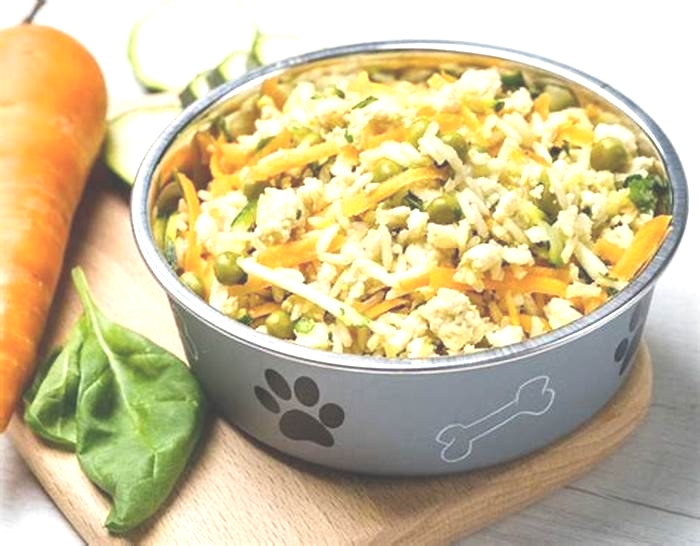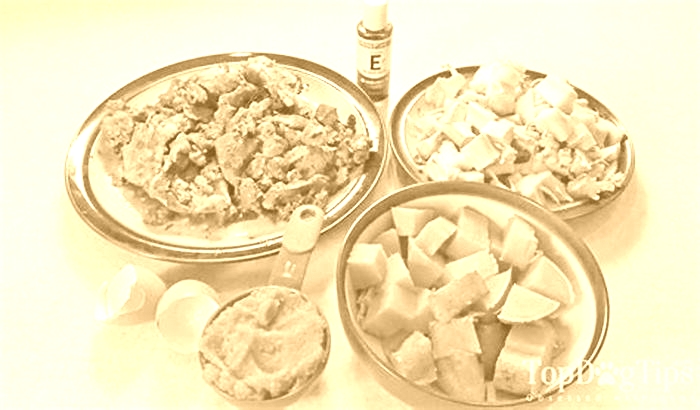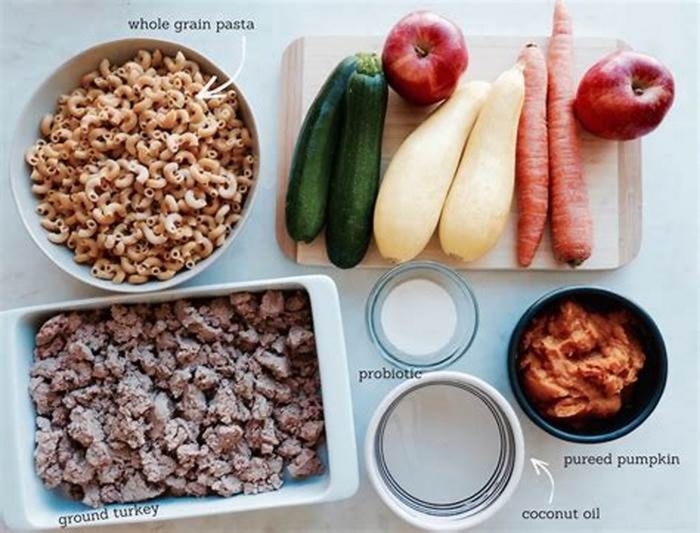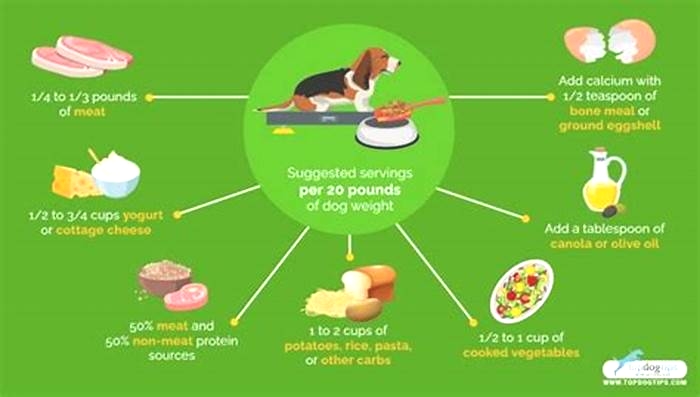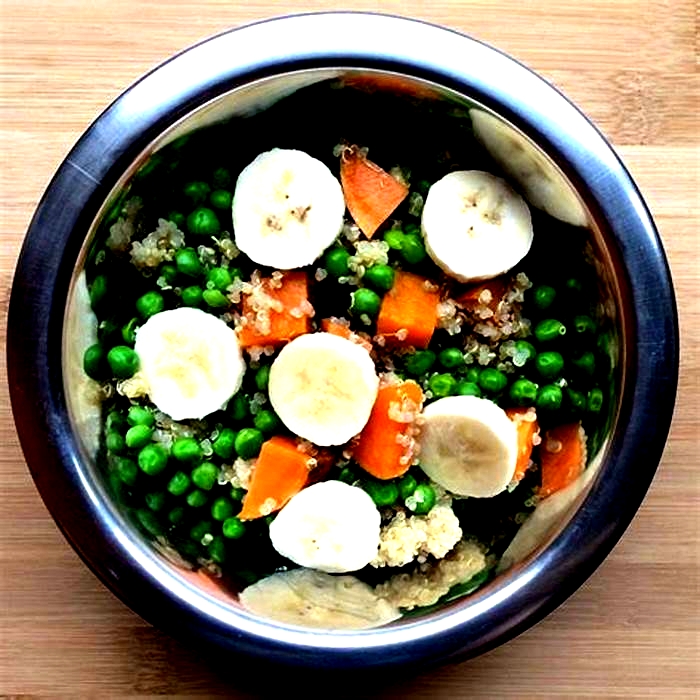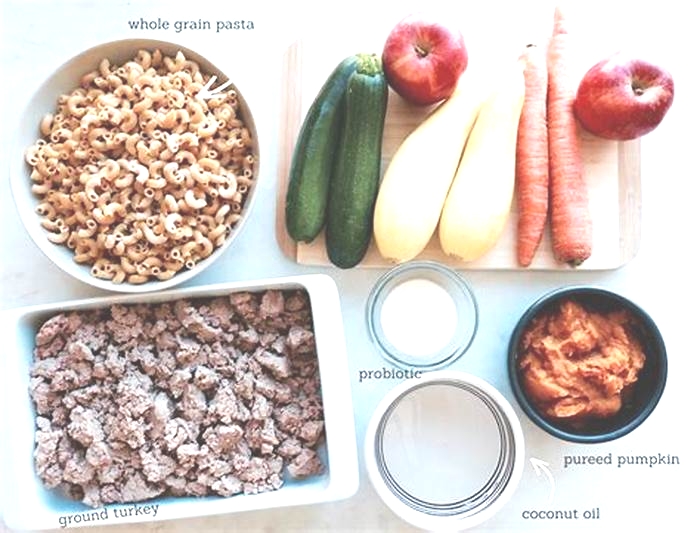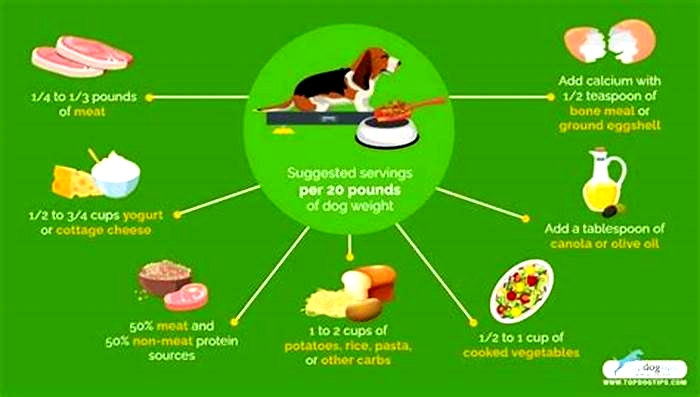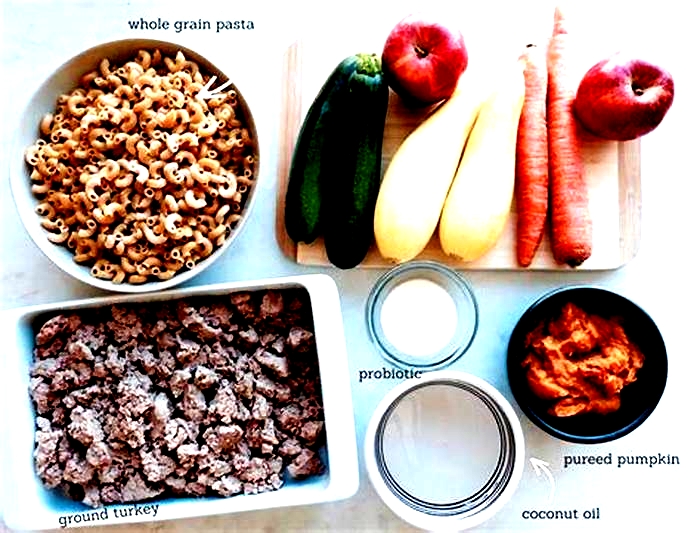homemade dog food vs raw diet
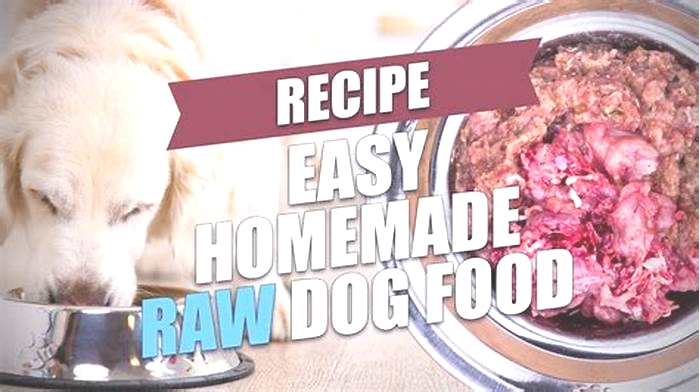
Should Your Dog's Food Be Raw or Cooked? Pros and Cons
Most people who feed real food to their dogs cook the food. And that's fine much, much better than feeding kibble or canned.
But an increasing number of owners, breeders, trainers, even veterinarians, have gone back to the traditional practice of feeding raw food to their dogs.
Dogs have been fed raw food (meat, fish, eggs) for more than fifteen thousand years.
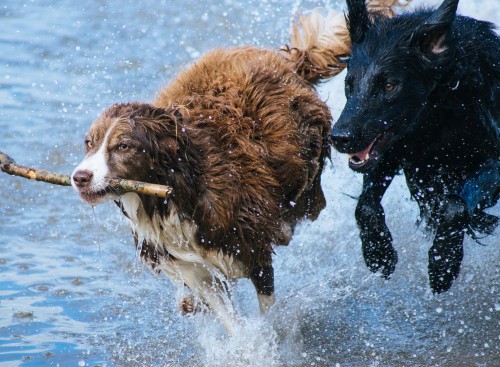
It's only comparatively recently that people began offering cooked food. A dog's digestive system isn't really designed for digesting cooked food, but it can usually adapt to simple cooked foods like meat, fish, eggs, and veggies.
At least.... many dogs can.
So if you've decided you want to try feeding real food, your first decision should be: raw or cooked?
| Raw | Cooked | |
|---|---|---|
| Digestibility | dogs absorb raw nutrients to the max | cooked nutrients are not as well-absorbed |
| "Exercises" your dog's digestive system | yes | not very much |
| Amount of poop | less | more |
| Includes vitamins, antioxidants, amino acids, enzymes | lots | many are killed or damaged by cooking |
| Risk of bacteria in the food | small amount is sometimes present | most are killed by cooking |
As you can see, raw wins on all counts except for the risk of bacteria.
Let's talk first about all those green checkmarks where raw is superior to cooked.
Then I'll answer the controversial question, "Is raw food safe to feed a dog?"
5 reasons raw food is better than cooked food
Reason #1: Dogs are designed to eat raw food, to completely digest raw food, and to draw the maximum nutrients from raw food.
Every part of your dog's digestive tract is tailor-made for raw food. The shape of his teeth are perfect for tearing meat. The strength of his jaws crushes small bones. The powerful hydrochloric acid in his stomach breaks down tough food material and kills bacteria. His short, straight intestinal tract quickly eliminates any questionable food before it can do any harm.
That's the digestive system of a raw meat eater. That's the digestive system of your dog, whether Chihuahua or a Great Dane.
The entire canine family (wolves, coyotes, wild dogs, domesticated dogs) has a digestive system designed to eat, digest, and absorb raw meat.
Which makes sense, because they can't roast or bake the rabbits they catch, right? They just eat the thing raw.
That's why a raw diet is also called a biologically-appropriate or species-appropriate diet.
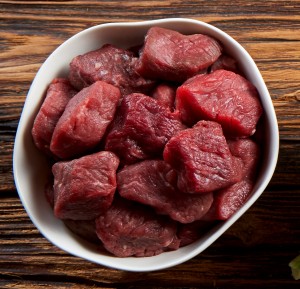
Reason #2: Eating raw food keeps a dog's digestive system fit and healthy.
You know the old expression, "Use it or lose it"? When a dog's digestive system goes to work digesting raw food, his digestive system is being exercised, which helps it stay strong and healthy.
Unfortunately, cooked meat makes your dog's digestive system lazy. When you cook meat, the heat breaks down the meat so that what you serve to the dog is already semi-digested. Eating semi-digested meat doesn't exercise his digestive system, and this lack of use can open the door to future digestive ailments.
Reason #3: Raw food is packed with enzymes, vitamins, amino acids, and antioxidants.
Sadly, these vital nutrients are damaged by cooking. In the case of essential digestive enzymes, now your dog must produce those missing enzymes in his pancreas. Forcing the pancreas to work overtime when it shouldn't need to, can lead to pancreatic ailments.
When you cook your dog's food, or whenever you feed kibble or canned food (which are always cooked), you should ADD synthetic digestive enzymes to the food to help him digest it. Prozyme, Naturvet, and Dr. Goodpet are popular brands.
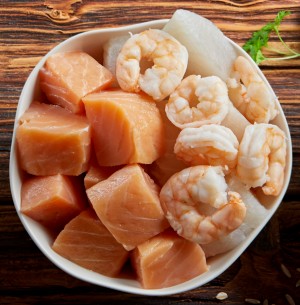
Reason #4: Raw foods contain a unique form of moisture that cooked foods don't have.
We all know that meat and veggies are naturally wet. Touch meat and you can feel its juices. Peel a carrot and the inside looks and feels moist and juicy.
But here I'm not talking about the kind of moisture that you can see or feel.
There's a more important kind of moisture that raw foods have. It's an internal moisture packed inside the molecular cells of raw meat, vegetables, and fruits.
Internal moisture is only released after the food reaches the intestines. This liquid bathes the intestines to keep them moist and slippery, which helps avoid constipation.
Unfortunately, although cooked meat and veggies look and feel moist, their molecular cells have been broken down by the heat, and their valuable internal moisture has been lost.
Reason #5: Dogs are less commonly allergic to raw food, and more often allergic to cooked food.
For example, Cashew is a Cocker Spaniel owned by a friend of mine. Cashew is allergic to cooked beef, and also to kibble and canned foods that contain beef. (All kibble and canned foods are cooked).
But when switched to raw beef, Cashew had no problems. This is probably because the proteins in raw beef are in their natural form and thus recognizable by the dog's digestive system.
Whereas cooking alters the molecular shape of meat proteins so much that the digestive tract doesn't even recognize it as food. Then the dog's immune system says, "Hey, what's that?" and sends out waves of histamines to attack the unrecognized "intruder". The result can be chronic allergies or digestive upsets.
Related:5 Best Raw Dog Foods (Frozen & Freeze-Dried)
Is raw food safe?
Whenever the topic of raw food comes up, especially raw meat, the #1 concern that dog owners have is, "Isn't that risky?"
Our mothers and grandmothers have taught us to be careful around raw meat. We wash our hands thoroughly after handling it. We sterilize our countertops.
So how could raw meat be safe for dogs? Doesn't it have bacteria in it? Like e.coli or salmonella?
Yes, pathogens can be present in raw meat.
Pathogens can exist on raw veggies and fruits, too. There have been many supermarket recalls of veggies and fruits for bacterial contamination.
Even dry and canned dog foods (which are all cooked) have been recalled for contamination from pathogens.
Unless we keep our dogs in a bubble, we cannot keep them away from pathogens. Bacteria is everywhere. That's the bad news.
The good news is that a small number of bacteria doesn't bother a healthy dog with a normal immune system. It's gross to think about, but doesn't your dog lick his own behind? Lots of e.coli in poop, but he doesn't get sick from that. Bacteria only become dangerous when they're able to colonize and multiply, and that rarely happens in a healthy dog.
Remember when I said that the canine family has a digestive system designed for raw food? Let's look at how that works:
- A dog's stomach produces powerful hydrochloric acid. Bacteria die off in acidic environments.
- A dog's digestive tract is short, which means waste material zips through quickly. Any bacteria that may have escaped the strong stomach acid doesn't have much time to dig in and multiply before getting pooped out.
In other words, strong stomach acids + quick elimination = little chance of normal bacteria causing any problems for a normal dog.
Ah-ha! Notice that I said "little chance of normal bacteria causing any problems for a normal dog."
You might have some questions about that word normal. For example, "If you buy raw meat at the supermarket and it happens to contain bacteria, how do you know it's normal bacteria?
What if it's LOTS of bacteria? Or some superform of bacteria?
You've probably seen ugly documentaries about the sorry state of our slaughterhouses and meat processing plants. They're awful.
Could the raw meat you buy at the supermarket be so contaminated that it's too much for even a DOG'S strong digestive system to handle?

That's a fair question. I have the same concern.
So I don't feed raw meat from the supermarket. I feed organic, grass-fed meat from my local farmer's market. The livestock is raised on small farms, grass-fed, without hormones or antibiotics, and without being processed through the giant processing plants that supply supermarkets with their meat. I can't prove that my meat is safer, but it feels safer.
I also rotate my homemade raw diet with a commercial raw diet that has been subjected to a safety process that kills bacteria. It's called High Pressure Pasteurization and it means the food was treated with extremely high water pressure that kills bad buggers like e.coli, salmonella, and listeria. One company describes it as "putting the squeeze" on pathogens without destroying vital nutrients as would occur with heating.
Next question..... just as we might ask what "normal" bacteria is, we might ask what a "normal" dog is.
Obviously our dogs aren't wolves and they're not wild. Is the digestive system of a domesticated dog still able to handle raw?
Yes. All over the world, thousands upon thousands of owners, breeders, trainers, and veterinarians feed raw. They feed raw to puppies and adult dogs, to mixed breeds, crossbreeds, and purebreds, from Chihuahuas to Great Danes.
The digestive system of a domestic dog is not appreciably different from that of a wild dog.
However....
The longer your particular dog has been eating cooked food (or dry kibble or canned food, which are also cooked), the more slowly you should transition him to raw.
This is because his digestive system has become lazier and less functional from the unnatural diet. It needs a few weeks to build up the proper enzymes for a natural diet
What if a dog is unhealthy? Suppose he already has a digestive disease or a compromised immune system?
Interestingly, sometimes those dogs are the best candidates for switching to a raw diet. It might even be a game-changer in curing or improving his ailment. Talk it over with a vet who either recommends raw or at least has an open mind about it.
On the other hand, there are some dogs for whom a cooked homemade diet might be the best choice. Now, if your vet doesn't even recommend cooked homemade, I would bet he's probably selling Science Diet or another crappy kibble or canned diet. Personally I would look for another vet. Because that's not an open mind at all.
2 ways to feed raw food
Either assemble the raw ingredients yourself, or buy a commercial (pre-made) raw food.... or do some of each.
 1) To prepare it yourself, see my simple homemade recipe.
1) To prepare it yourself, see my simple homemade recipe.
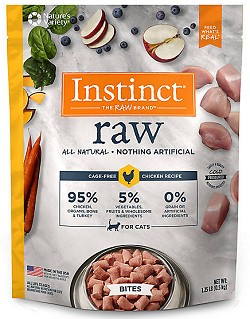 2) To buy a commercial raw food, visit your local pet store. You'll find frozen raw food in the freezer section; just defrost and serve. You'll find small bags of freeze-dried raw food on a shelf; just add water and serve. I use the frozen myself, but both are good.
2) To buy a commercial raw food, visit your local pet store. You'll find frozen raw food in the freezer section; just defrost and serve. You'll find small bags of freeze-dried raw food on a shelf; just add water and serve. I use the frozen myself, but both are good.
You can also buy these foods online.
See my recommended brands of frozen and freeze-dried dog food.
Commercial raw diets make complete meals by themselves, or when combined with my homemade recipe, or even with kibble or canned food.
To feed cooked food
 See my simple homemade recipe.
See my simple homemade recipe.
0 Comments
Cooking food for dogs makes sense
It is certainly a fact that cooking food for dogs makes many ingredients more digestible. it also makes many nutrients more accessible to the dogs digestive system than if they were eaten in their raw state. Carrots would be a prime example of this.
Cooking also kills dangerous organisms. Experts recommend cooking meat as the best way to kill harmful bacteria.
Safety and the raw food diet
One of the biggest drawbacks to raw feeding dogs say the experts is the issue of bacteria in uncooked meat. Particularly its potential to harm both dogs and humans who share the same household and its facilities. An investigation into the raw feeding of greyhounds in the United States found that 66% of the raw food samples tested contained salmonella. Salmonella poisoning can kill both humans and dogs.
Further, a recent survey carried out in The Netherlands found that of 35 raw meat diet products tested from eight different brands, 23% contained E coli, while a staggering 80% contained antibiotic-resistant E coli. Not only that, but listeria was found in more than 50% of the products and salmonella in 20% of the products tested.
The veterinary position
The British Veterinary Association, the American Veterinary Medical Association and the Canadian Veterinary Medical Association have all warned of the health risk to both humans and animals that could potentially arise as a result of the raw feeding of dogs. All have also cast doubt on the claims of raw feeding proponents of the benefits of raw feeding over any other method of feeding dogs.
And moi?
Me? I wont deny Ive been tempted to try raw feeding my dogs on occasion. I personally wouldnt argue against it, and as Ive said many times, I greatly admire those brave enough to feed their dogs that way. Lets be honest, apart from anything else, it would be a lot easier, and a lot less costly, if I didnt not only insist on cooking for my dogs, but on using only meats passed fit for human consumption.
But for the time being I think Ill stick with lightly cooked food for my dogs and hope they wont one day decide to hold it against me!
Making homemade dog food
If you really want to improve your dogs health, nothing beats homemade dog food.
Especially for anyone new to home cooked dog food, Ive created a step-by-step guide to making healthy homemade dog food. It includes a number of canine nutritionist- formulated homemade dog food recipes.

